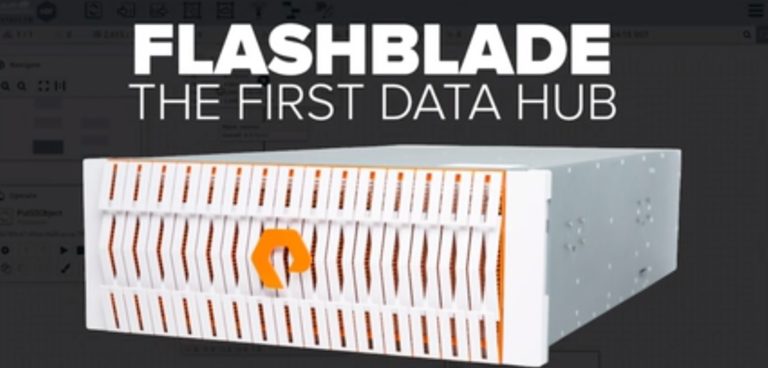Pure Storage tells Techzine about the introduction of the data hub, which the company uses to modernise its storage architecture for unstructured, data-intensive workloads. The data hub is built on Pure Storage Flashblade, a storage platform for artificial intelligence (AI) and analysis applications.
According to the storage provider, organizations need to design their infrastructure with data as a guide, to innovate and survive in an increasingly data-driven business. This is to create full, real-time access to that data. Traditional solutions are designed for use with disk-based systems. Traditionally, they have contributed to the creation of datasilos.
Features
However, a data hub is designed to deliver, share and merge data so that the value of data can be unlocked. Currently, organisations are faced with four types of analytics solutions, namely data warehouse, data lakes, streaming analytics and AI clusters. A data hub integrates the main functions of these four, by merging them into one platform. Ultimately, a data hub therefore contains the four characteristics that Pure Storage lists as follows:
- High throughput for storing both files and objects: Backup and data warehouse applications require extensive throughput for mainstream, file-based workloads and object-based cloud applications.
- True scale-out design: The true power of a datalake is its scale-out architecture that allows unlimited scaling of batch tasks. Software and not the user takes care of the movement and performance.
- Multi-dimensional performance: Data is unpredictable and can enter at any speed. That’s why organizations need a platform that can adequately process any data type, with any access pattern, directly.
- Large-scale parallel: Within the IT sector, there has been a drastic shift from serial to parallel technologies to mimic the human brain. Storage should be able to keep track of this.
In summary, data silos are eliminated to pave the way for AI, analytics and cloud-native applications.
This news article was automatically translated from Dutch to give Techzine.eu a head start. All news articles after September 1, 2019 are written in native English and NOT translated. All our background stories are written in native English as well. For more information read our launch article.